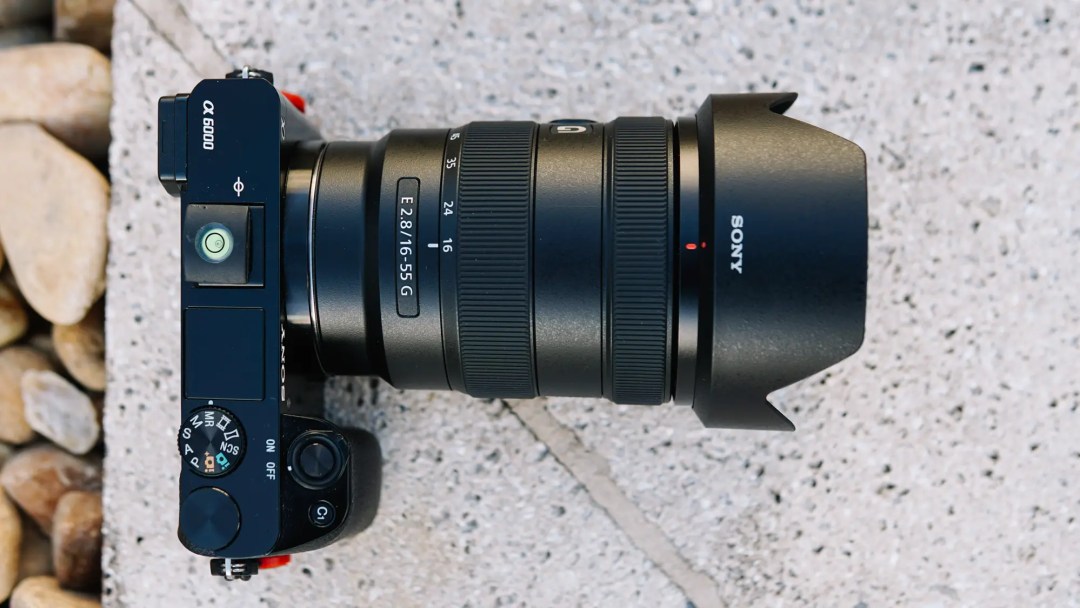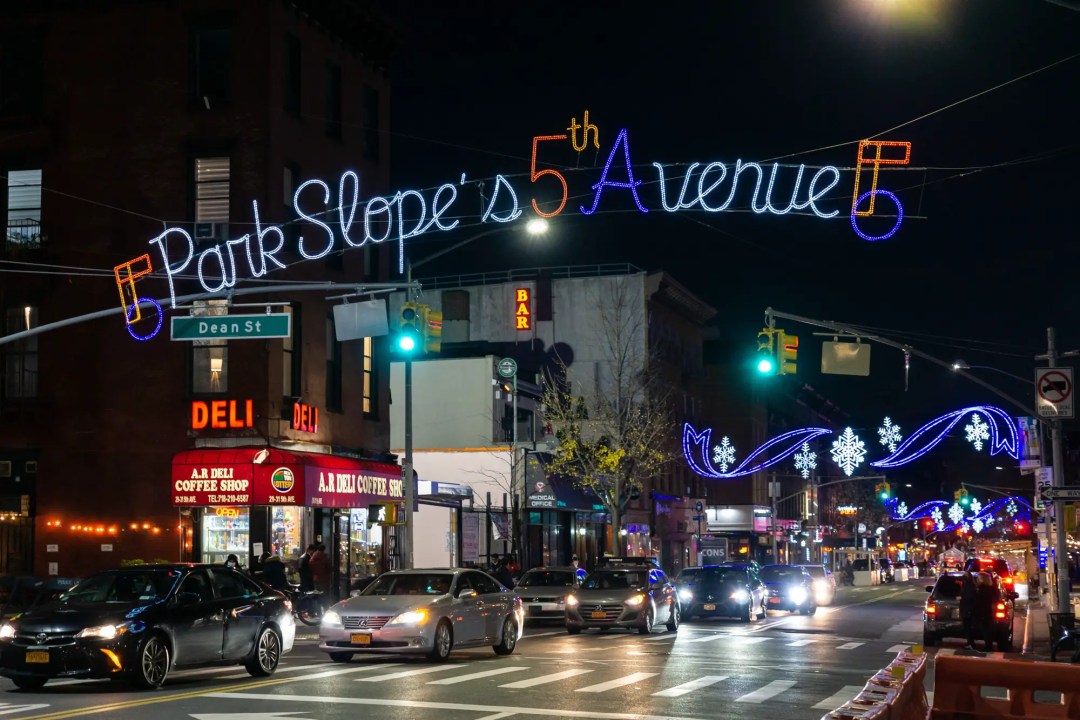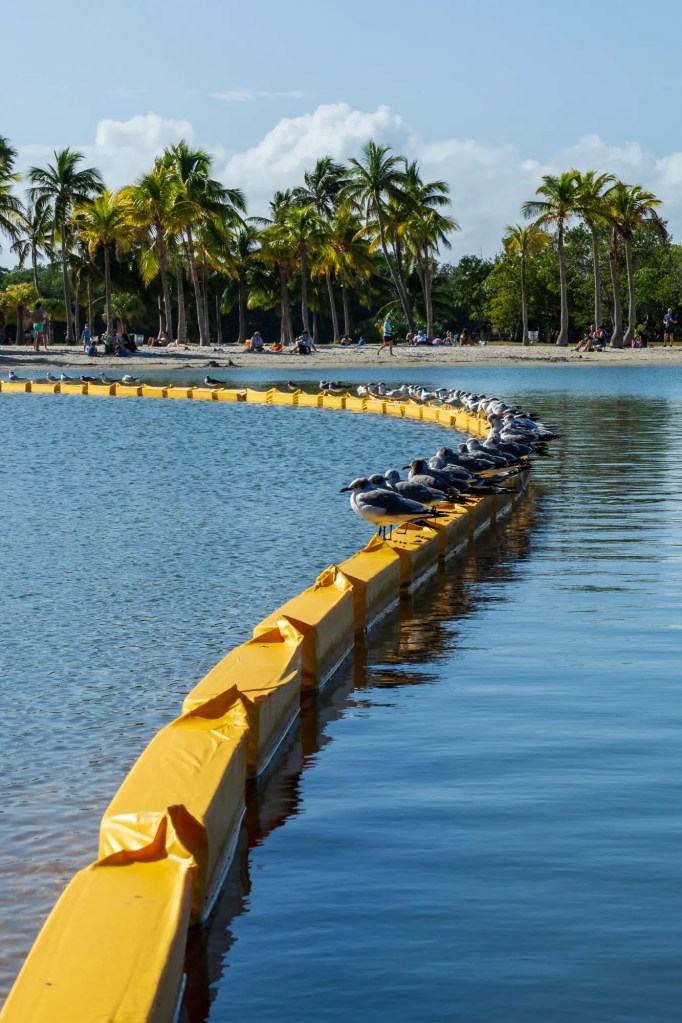Photography isn’t a cheap hobby by any means, and shooting with a Sony camera doesn’t really help. With Sony’s dominance in the mirror-less market, the brand’s comfortable charging a pretty penny for both their crop-sensor E-mount and full frame FE-mount lenses. And as a money-conscious enthusiast using the Sony APS-C platform, I personally don’t have the budget for many of the top lenses, so I look for glass with the right ratio of price to performance and do my due diligence to justify my purchases. In an expensive hobby where gear acquisition syndrome could be considered a diagnosable mental condition, justification is my only savior.
Do I need this? Is this item worth the money? How much do I need to spend to get quality results?
These are questions I frequently ask myself when looking to add new gear to my camera bag. Needless to say, in my efforts not to break the bank, I’ve never had the opportunity to shoot with any of Sony’s high-end lenses, and it’s left me curious as to what I’m missing out on. Luckily, one of the perks of writing for Casual Photophile is having the ability to test photography gear I wouldn’t normally consider within reach of my personal budget. So, with a specific goal in mind, I decided I’d test and write about the Sony E 16-55mm f/2.8 G, the company’s most expensive APS-C zoom lens, and a lens that my budget would preclude me from buying. My goal: Determine whether the results from this lens clearly justify its $1300 price-tag.

First Impressions
Let’s address the elephant in the room; the Sony E 16-55mm f/2.8 G costs $1300. At this price-point, this lens is not what I’d consider a budget-friendly addition to Sony’s APS-C platform, which I feel is generally populated by casual shooters and enthusiasts who don’t have fat wallets or high credit limits. In fact, the lens alone costs the same price as Fujifilm’s X100V (a premium compact camera) and significantly more than almost all of the interchangeable lens camera bodies in Sony’s APS-C lineup (the A6600 costs $100 more). However, Sony never said this lens was supposed to appeal to budget-conscious shooters. Instead, it’s billed as a professional-grade option.
Though I’m sure Sony utilized premium materials to create this lens, its design and build quality aren’t all that much different from other E-mount zooms I’ve attached to my A6000. Regardless, its lightly textured matte-black finish looks good and the build feels sturdy in the hand. The glass itself is big (67mm in diameter), beautiful, and treated with a couple of different fancy coatings that give it an extra edge over lesser APS-C lenses. This includes a “Nano AR” coating to reduce possible ghosting and flares, as well as a fluorine coating to resist water, oil, and fingerprints. The lens details are nicely embossed on the barrel, and the infamous “G” badge has a reflective silver finish to ensure it gleams in the sunlight.
The lens also features weather sealing against dust and moisture, which gives it another leg-up over more budget-friendly zooms and makes it that much more versatile to use in challenging outdoor conditions. However, it’s important to note that Sony chose to omit optical image stabilization (OIS) from this lens, which is a curious move. At this price point, go big or go home, am I right? But I guess with 55mm as its longest focal length and with a constant f/2.8 aperture, we’re unlikely to suffer camera shake while using this lens for stills, unless we’re taking photos during an earthquake.
The zoom functionality of the Sony E 16-55mm G is external and manual. The throw is fairly short given its wide-to-normal focal range and takes less than a second to go from one end to the other, which I really like for stills. The focus mechanism is internal and electronically controlled by the camera. The zoom ring, which sits at the back of the lens barrel, is larger than the focus ring, but they both glide along the barrel with ease. The rings are overlaid by tough, grippy rubber, are smartly spaced for easy differentiation, and nicely dampened to prevent any sort of lens creep or missed focus. In addition, the body includes an AF/MF switch and a focus hold button, which can be remapped to a custom function. These physical controls are welcome additions that add a little extra tactility and functionality to the A6-series camera experience.
Physically the 16-55mm G lens is hefty. Due to its constant f/2.8 aperture, this thing utilizes some serious glass, making it larger and longer than any of the other E-mount lenses that I currently own. It weighs in at 17.5 oz (494 g) and measures 4 inches (100mm) long un-extended, though zooming from 16mm to 55mm extends the barrel and adds about an extra inch to its overall length. I’m not used to handling a zoom lens with a constant aperture, so this lens can make the Sony A6000 feel front heavy and a bit unbalanced, especially when it’s fully extended. My guess is that this lens is better suited for the beefier A6600 or A6500 bodies.
While the lens’ 16-55mm zoom range (24-82mm full-frame equivalent) is a great option for every-day-carry, I can see this thing possibly causing some fatigue if you’re keeping it slung around your neck all day without a well-padded strap. But despite my minimalist reservations concerning its size and weight, in the grand scheme of things, the 16-55mm G lens is largely considered compact compared to other lenses in its class. And remember that its zoom range makes it an ideal choice for a one-lens travel solution, covering urban, landscape, and portrait work all in one. This has the potential to lessen our overall photography load.

Real-World Performance of the Sony E 16-55mm f/2.8 G
Once you take the Sony E 16-55mm f/2.8 G out into the wild, the asking price begins to make more sense. On the inside, the lens is made up of 17 elements in 12 groups, including two “advanced” aspherical, two aspherical, and three extra-low dispersion elements that, according to Sony, “suppress aberration for outstanding corner-to-corner G Lens resolution” and “reduce color bleeding to a minimum.” In addition, the lens features a 9-blade circular aperture, which creates “luscious background bokeh for deep, impressive imagery.”
Marketing copy notwithstanding, this lens might very well be the best E-mount lens I’ve ever used, producing some of the cleanest images I’ve ever taken with my A6000. Needless to say, everything Sony did with this lens (except for excluding OIS) ensures that we can capitalize on the full potential of Sony’s excellent APS-C sensor.
In terms of sharpness, the Sony E 16-55mm f/2.8 G is tack sharp across the frame throughout the entire zoom range, even at f/2.8. No need to stop down to get the best results, simply because it’s consistently crisp at all apertures (though I should note that I don’t typically stop down past f/11, and this lens can go as far as f/22). To add to that, those fancy lens coatings I mentioned earlier must be doing something, because in my time with the lens I only experienced one instance where flare caused some blown highlights and softness in my image and one extreme contrasty instance that produced strong purple fringing. Other than that, flare, ghosting, and chromatic aberration are virtually non-existent with this lens, even in the uncorrected RAW files, which I can’t say about images made with other E-mount lenses that I own.
The constant aperture is probably the main reason this lens is so attractive to Sony APS-C shooters, not to mention it’s the first native E-mount zoom lens to have a constant aperture this fast. For a zoom lens, f/2.8 is bright and extremely useful in all kinds of situations, especially for indoor and low-light photography. With my go-to zoom lens (the Sony 18-135mm which I reviewed here) I tend to avoid low light situations due to its slower, variable aperture. But with the Sony E 16-55mm f/2.8 G, I found myself reaching for my camera despite the sun being below the horizon. While I would normally switch to one of my f/1.4 primes for low light snaps, I really enjoyed the freedom that the 16-55mm G lens afforded me with its combination of zoom range and fast aperture. I typically don’t like to push the ISO on my A6000 as I find the results to be too noisy past 1600. But with this lens I was pleasantly surprised to find that I was able to stay at or below 1600 in low light while achieving a reasonable shutter speed with the lens wide open. OIS would have been welcome in these situations, but I was able to avoid camera shake for the most part and get relatively clean results by keeping the lens wide open (as long as the area I was in was fairly well lit).


There’s not much to say about autofocus performance as, in general, Sony’s AF technology is arguably the best of the best, even on their more mature products. But for the sake of being thorough, the AF performance of the 16-55mm G lens is fast, silent, and accurate. I honestly didn’t expect any less, especially since this is a native lens. Even in low light conditions (despite some hiccups in extremely dim light), I didn’t find this lens to struggle to a fault, thanks to that constant aperture. This lens can also focus as close as (about) 1 foot, which I acceptably close and comparable to my 18-135mm lens in this regard. This lens is not meant for macro work, but I think the 16-55mm allows for some pretty decent close-up shots.
I’m not one who fixates on bokeh performance, but I will say that the nine-blade rounded aperture Sony put in this lens produces soft, pleasing separation at all focal lengths, especially when shot wide open at f/2.8 and zoomed into 55mm. Achieving bokeh this soft with a zoom lens is a really nice perk to have when looking to isolate subjects, so I can see why this lens would be an ideal choice for versatile portrait and lifestyle photography.
Left uncorrected, images from this lens do show some significant barrel distortion and light fall-off at 16mm, but minimal pin cushioning on the long end. While zooming in to about 20mm will clear up the light fall-off, and software corrections make distortion a non-issue these days, with a price tag of $1300, I was expecting the 16-55mm G lens to be optically perfect straight out of the camera at every focal length. But I guess complete perfection is unattainable even at this price point. It just goes to show that some imperfections are to be expected when you’re considering a versatile zoom lens, even if it costs more than the camera body on which it’s mounted.
It could just be me, or the environments in which I was shooting, but I was pleasantly surprised to find that the Sony E 16-55mm f/2.8 G renders colors truer to life than I’ve come to expect from Sony optics, which (to my eye) typically lean toward cooler tones. After picking up film photography, I found that I have a penchant for warmer tones, so I’m not a huge fan of Sony’s color science, and I typically find myself messing with the colors in post-processing. However, with this lens, the colors looked pleasing straight out of the camera on most occasions (even if they still lean a bit cooler than I’d like), and I felt like I didn’t need to do much color-correcting or white-balancing in post. In fact, the majority of the sample photos in this article did not require any color corrections, which (for me) says a lot.



[The slide above shows distortion of the lens at its widest focal length (16mm at f/2.8). One shot is corrected for distortion and the other is straight out of camera.]
How Much is Perfection Worth?
It’d be discourteous to say that the 16-55mm f/2.8 G is anything but an exceptional lens. In fact, I think the performance of this lens easily puts it at the top of its class in almost all possible categories. With that said, I would highly recommend it to two types of people: Professional photographers relying on Sony’s APS-C sensors for paid work, and Sony-fanatic APS-C shooters with no budget restrictions looking for the best native standard zoom lens. If you identify as one of these people, you can close this article and pull the trigger. If you don’t, you might want to keep reading.
Like every conclusion to an article like this, whether or not a lens is worth its price tag is a matter of opinion. With that said, I personally don’t think the Sony 16-55mm f/2.8 G lens is worth the $1300 asking price. I mainly say this because (while I might be overstepping here) I think the Sony APS-C platform is best suited for shooters who enjoy photography as a hobby, looking to capture moments along their travels as well as in their everyday lives. For casual photographers like these, spending $1300 on a lens might not be an advantageous decision. And despite all the praise I’ve given the lens in this write-up, I don’t think the average enthusiast photographer shooting on an A6000-series body needs to drop an outrageous amount of cash to get Sony G-level results. This is especially true when there are other lenses for the system which cover about the same zoom range (or more), are significantly less expensive, and produce comparable results.
An excellent example of one of these greater value lenses is the Tamron 17-70mm f/2.8, which is probably the most direct competitor to the Sony 16-55mm G lens. Though it’s fairly new (released January 2021), by all accounts, Sony’s $1300 money-sink is outmatched by the Tamron’s value to performance ratio. The lens sells for just $800 but covers a wider zoom range, rivals the Sony in sharpness, and includes weather sealing as well as image stabilization. An even cheaper competitor is the Sony 18-135mm f/3.5-5.6 zoom lens, whose exceptional performance and portability I can personally vouch for. Despite its optical limitations, with a bit of care and post-processing work, you can get top-notch images for $1000 less than the 16-55mm G lens.
At the price point of $1300, you might even consider making the jump to full-frame glass (FE-mount). Luckily, APS-C sensors have the benefit of supporting both E-mount and the full frame FE-mount lenses, which basically future-proofs your photography kit should you decide to upgrade to a full-frame sensor down the line. Even with the added flexibility, some of these lenses still come in cheaper than the APS-C-dedicated 16-55mm G lens. Some good full frame FE-mount options include the Tamron 28-75mm f/2.8 and Sigma 24-70mm f/2.8, which retail for $880 and $1100 respectively.


Final Thoughts
Considering their significant market share in the mirror-less industry, it’s not news to anyone that Sony makes some of the best cameras and optics money can buy. However, it is my opinion that they tend to overprice some of their products to a fault, especially when the competition is producing similar optics and selling them at a lower price. To reiterate, I do think the Sony E 16-55mm f/2.8 G is an exceptional lens and a worthy purchase for professionals, but not necessarily for the average photographer like me. In order to consider it a viable option, I think this lens would have to be priced much closer to $1000 or less.
After trying out Sony’s most expensive APS-C lens, I’m happy to conclude that I’m not really missing out on much, other than that fast constant aperture, which isn’t worth the $1300 at this point in my photography journey. With my 18-135mm lens, I think I can get comparable results in a smaller package with some added range and OIS. But when I do finally make the decision to upgrade to a faster, higher-quality zoom lens, it’s good to know that there’s always more affordable fish in the sea.
Buy the Sony E 16-55mm G Lens from B&H Photo here
Follow Casual Photophile on Facebook and Instagram
[Some of the links in this article will direct users to our affiliates at B&H Photo, Amazon, and eBay. By purchasing anything using these links, Casual Photophile may receive a small commission at no additional charge to you. This helps Casual Photophile produce the content we produce. Many thanks for your support.]

























Not worth it in my opinion. You are paying for a finely crafted piece of high tech that is a wonder to use, but if all you are concerned with is a quality photograph, you can spend your money better else where. Get a larger sensor and shoot manual lenses. If you want a fine piece of high tech that is a joy to use, looks cool, feels cool, is fun to use and you can afford it, then buy the expensive lens. The brain is the most important piece of equipment you have and is under utilized.